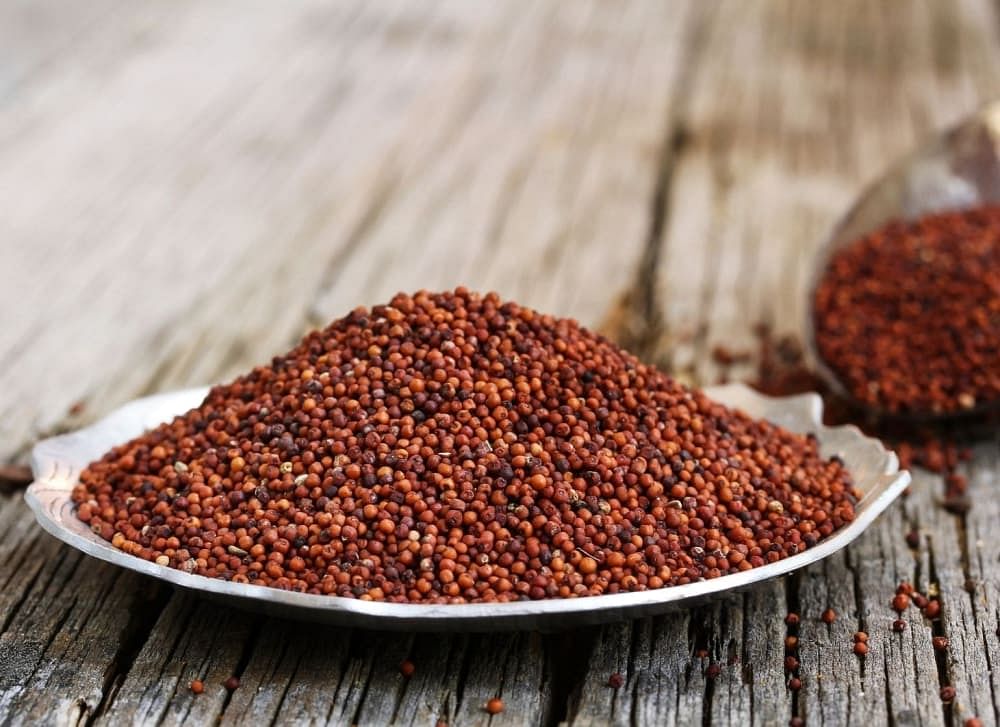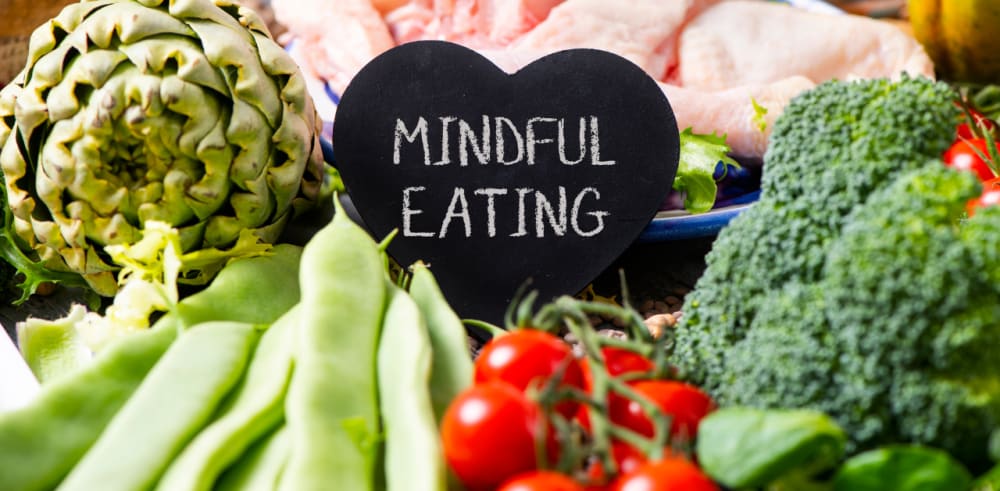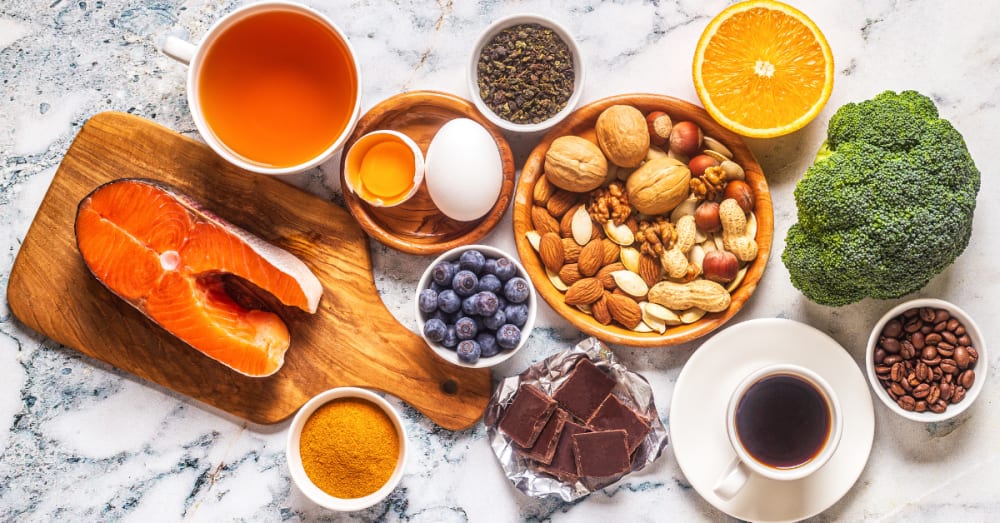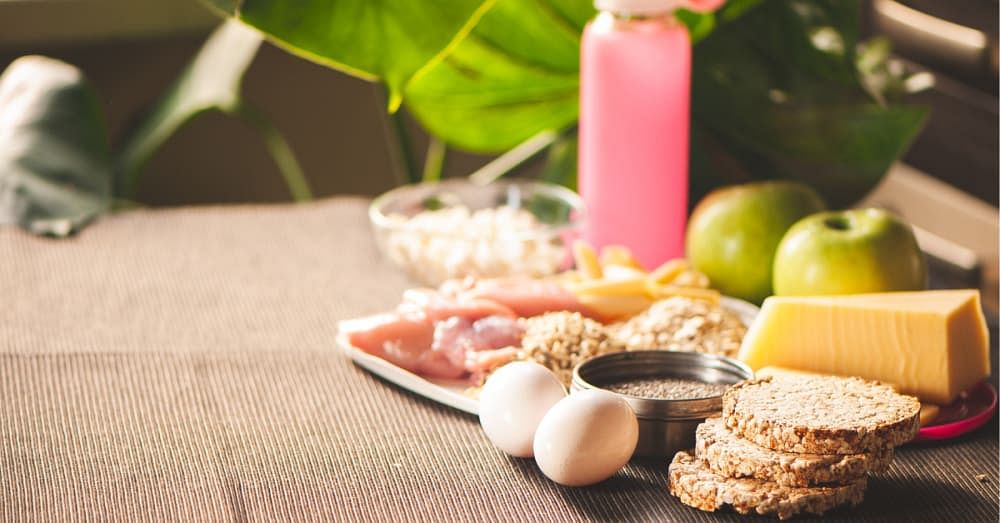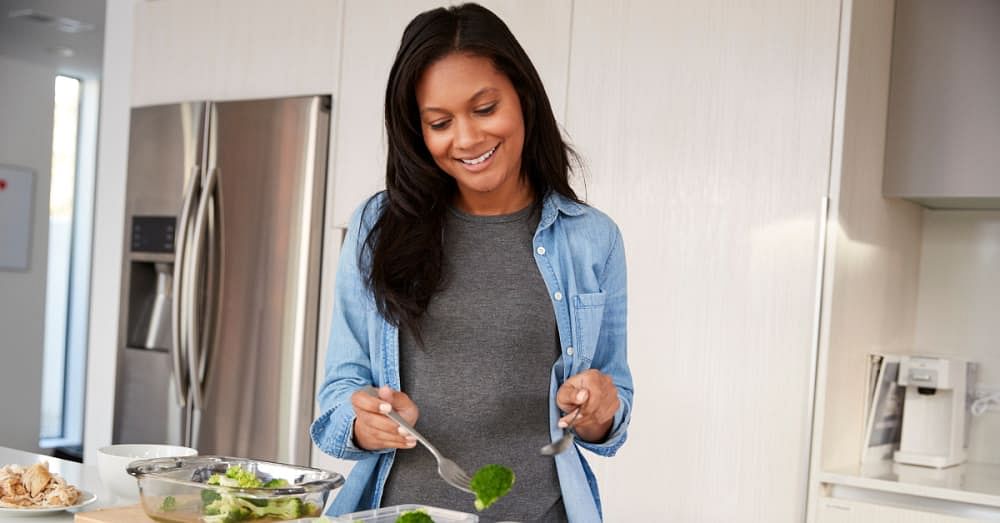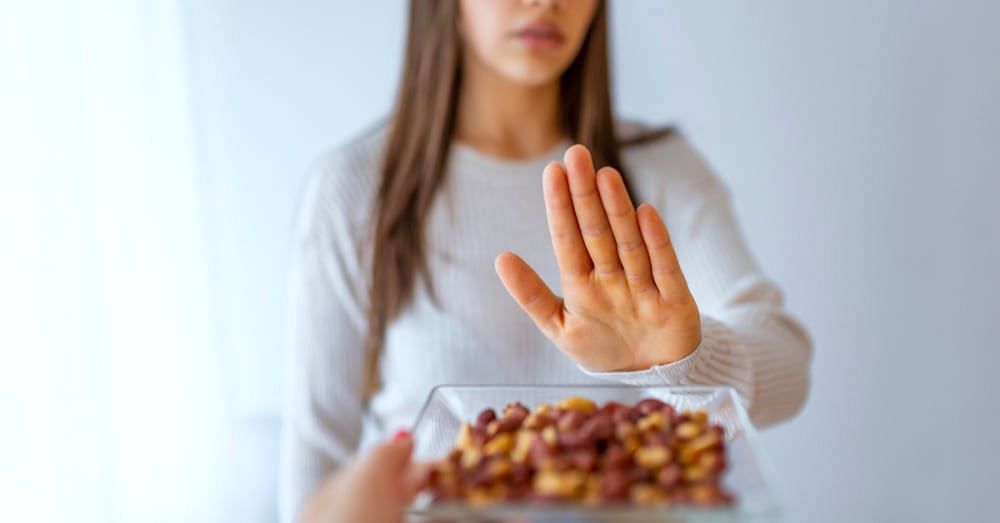Ragi, or finger millet (Eleusine coracana L.), is familiar to many Indians, especially in the south. However, it is not common in many modern diets.
It's surprising and unfortunate, considering ragi's nutritional and therapeutic properties. Besides, it is a very adaptable crop admirably suited to Indian climatic conditions, making it doubly significant.
Let's take a look at the nutrition and benefits of ragi and some delicious recipes for you to try yourself today!
What Is Ragi?
Ragi or finger millets are coarse food grains consumed mainly by people in the rural and southern parts of India. The ragi grain is used to prepare a flour that contains half portion wheat. Due to its high fermentation quality, it is used to prepare various beverages.
Ragi Nutrition
In a 100g serving of Ragi, the nutrients are
- 80 grams of carbohydrates
- 13 grams of protein
- 0.6 grams of sugar
- 2.7 grams of dietary fibre
- 3.4 grams of fat
- 0.7 grams of monosaturated fat
- 2 grams of polysaturated fat
- 354kcal Calories

Ragi Benefits
Ragi is a powerhouse of nutrients like calcium, magnesium, iron, sodium, potassium. It has more nutritional value than wheat flour and plain white rice. The following are some of the most significant ragi benefits.
1) Helps in getting relief from constipation:
Ragi is rich in dietary fiber. 100g of ragi roti contains 11.5g of dietary fiber, making ragi foods easily digestible. Therefore, it facilitates bowel movements and provides relief from constipation.
2) Prevents osteoporosis:
Research suggests that low calcium levels in the body result in a low bone mass that makes people prone to fractures. Therefore, we need an adequate amount of calcium to prevent osteoporosis and keep bones strong.
According to research, finger millets have the highest calcium content out of all the cereals. 100g of ragi has 344mg calcium content that helps increase bone density.
3) Helpful with anemia:
Ragi is also a rich source of iron. 100g of ragi has a 3.2mg iron content. Since an iron deficiency in the body causes anemia, adding ragi foods to your diet will help treat anemia.
4) Aids in regulating blood pressure:
Research suggests that since ragi has high fiber content, it has laxative properties that prevent clogging of arteries and blood vessels. Thus, it regulates blood sugar levels.
Moreover, ragi also has polysaccharides such as β-glucan, arabinoxylans, and cellulose. They increase the viscosity of the elements in the gut and slow down the process of cholesterol absorption.
5) Improves the body's metabolism and promotes weight loss:
The tryptophan amino acid in ragi reduces appetite. Moreover, the high dietary fiber content makes ragi food slowly digestible, keeping the stomach full for a long time. It prevents overeating and aids in weight loss.
6) Slows down skin aging:
Ragi has amino acids like methionine, tryptophan, and lysine that protect the skin tissues from damage. Therefore, ragi aids in reducing wrinkles and slows down skin aging. The amino acids in ragi also boost skin collagen. It makes the skin healthy and enhances skin elasticity.

7) Ragi for Babies
Calcium is an essential mineral for the proper growth and development of children. Since ragi is a rich source of calcium, it is beneficial for babies as it promotes their growth and development and makes their bones strong. Ragi is also a good source of protein that helps prevent malnutrition in children.
8) Ragi for Diabetes
Ragi is one of the most healthy food items for individuals with diabetes. According to research, the high dietary fiber in ragi helps regulate the blood sugar level. Moreover, ragi is rich in calcium, antioxidants, and phytochemicals that are slow to digest. As a result, the blood glucose levels in the body remain stable for a longer duration.
Ragi is also considered beneficial for diabetic patients due to its low glycemic index (GI). Research suggests that brown ragi chapati has the lowest glycemic index.
Ragi Vs Wheat
Even though wheat is a more popular food crop in India, an increasing number of people are switching to ragi rotis due to their high nutritional value. As per research, the content of dietary fiber, calcium, and phenolic compounds in ragi is much higher than in wheat.
100g of wheat chapati has 264 calories, 1.3g of fat, 55.81g of carbohydrates, 9.61g of protein, 486g of sodium, and 239mg of potassium.
On the other hand, 100g of ragi has 328 calories, 7.30g of protein, 72g carbohydrates, 11.50g of dietary fiber, 3.9mg iron, 11mg sodium, 344mg calcium, and 408mg potassium.
Ragi Recipe
1) Ragi Ladoo
- Roast the black sesame, groundnuts, and coconut separately in a shallow pan at a low temperature. Set them aside to cool.
- Peel the groundnuts.
- Place the almonds in a pan with a tsp of ghee, toast them for a couple of minutes, and set aside.
- Roast the Ragi flour with 2-3 tbsp of ghee in a large pan for 15 to 20 minutes. If necessary, add more ghee.
- Sprinkle almonds, groundnuts, coconut and sesame seeds on top. Stir well.
- Pour palm sugar and cardamom powder on top. Stir for another two minutes.
- Turn off the heat and let it cool.
- Roll 3-4 tbsp of the mixture into a ladoo using ghee on your palm. If required, add more ghee to make a firm, round ladoo

2) Ragi Halwa
- In a tbsp of butter, sauté the cashews, coconut oil or ghee. Keep aside.
- Blend the ragi flour with the water.
- Stir constantly while heating the mixture on medium heat in a thick-bottomed vessel.
- Mix in the cardamom powder after 3 minutes.
- Put 2 tablespoons of coconut oil (or ghee) in at a time. Blend until all the oil (or ghee) is used.
- Continue stirring for another 3–4 minutes. The consistency will change from pasty to ball-like as the mixture comes together. Add the sautéed cashews.
- Cook for another 2–3 minutes, mixing constantly. As the mixture cooks, the oil will separate from the ragi ball. Transfer the halwa to a glass bowl and drain the excess oil. Serve warm
3) Ragi Pakoda
- Slice and mince the ginger. Finely chop the coriander and curry leaves. Combine the cabbage, capsicum, ginger, coriander, and curry leaves in a bowl.
- Mix the ingredients in a large mixing bowl, - ragi flour, besan, cashew pieces, sesame seeds, salt, black pepper powder, and chilli powder - together.
- Fry in oil until golden brown. Stir in 2 tablespoons of hot oil to the dry mix. Mix well the dry ingredients with the vegetables. Sprinkle with just enough water to make the dough. Slice ragi pakoda into bite-sized pieces and fry them in hot oil.
- Garnish with chaat masala before serving.
4) Ragi Dosa
- Place the dosa mix on a hot tawa.
- As you lift and rotate the tawa, gradually spread the mix into a thin circle. In general, Ragi dosas tend to tear when spread with a ladle.
- Brush the edges and centre with oil.
- Turn the dosa over after a few minutes.
- Move it to a plate afterwards.
Ragi Side Effects
Even though ragi offers several benefits to the body due to its high nutritional content, excess intake of ragi foods can cause health problems, including the following:
- Increase in potassium levels in the body: Excess consumption of ragi foods can increase the potassium levels in the body. It can cause problems like tingling sensations, nausea, and chest pain.
- Kidney problems: Ragi has a high protein content that is not good for people with kidney diseases because it becomes difficult for the body to absorb excess protein.
- Severe constipation: Since ragi is digested slowly, its excess consumption can cause severe constipation problems.
Summing Up on Ragi
Ragi is an excellent food crop that is suitable for people of all ages. Ragi has an amazing nutritional value per 100g, and because it is gluten-free, it is an essential part of a vegan diet, too.
Fitness freaks and those who want to make healthy food choices every day will find it to be the perfect diet component.
Faqs
1) What Happens When You Eat Ragi every day?
Ragi lowers your blood sugar and stabilizes your sugar level when consumed regularly. Ragi works as an absorbent, meaning it absorbs starch and lowers digestion. It also reduces anxiety, insomnia, and depression. It may even reduce our risks of developing cancer.
2) What Is the English Name of Ragi?
Ragi is commonly known in English as finger millet, as it resembles the five fingers attached to the palm, owing to its appearance of five spikes found on the head of the grain.
3) Does Ragi Increase Weight?
No, on the contrary, Ragi works as a great source of fibre when it comes to people trying for weight loss. Furthermore, Ragi helps prevent obesity as well. In addition, it controls Diabetes in the body, ensuring that the person remains healthy and strong.
4) Who Should Not Eat Ragi?
Ragi is not recommended for people having Kidney-related problems, constipation, diarrhoea and thyroid. It can react negatively to them.

